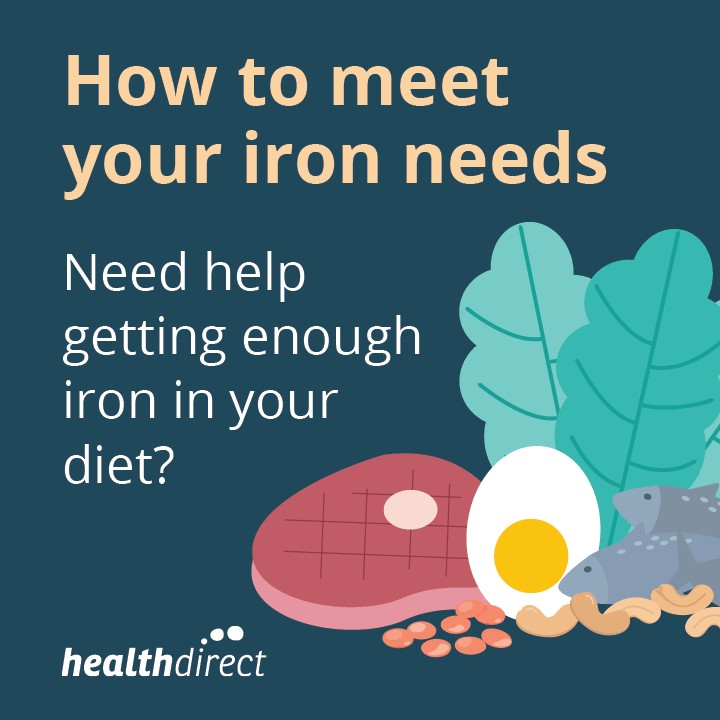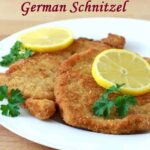Iron is a vital nutrient that our bodies require to function correctly. Since our bodies cannot produce iron on their own, we must obtain it through the foods we eat. Iron plays a crucial role in creating hemoglobin, a component of red blood cells that carries oxygen throughout the body. Ensuring you consume enough Foods High In Iron is essential for preventing iron deficiency and maintaining overall well-being.
Understanding Iron: Why It’s Essential
Iron is not just another nutrient; it’s a powerhouse element involved in numerous bodily processes. Its primary function is in the formation of hemoglobin, the protein in red blood cells responsible for transporting oxygen from your lungs to every part of your body. Without sufficient iron, your body can’t produce enough hemoglobin, leading to iron deficiency and potentially anemia. This can result in fatigue, weakness, and impaired cognitive function. While the body stores iron, it’s constantly used and needs to be replenished through diet. Therefore, incorporating foods high in iron into your daily meals is not just beneficial, it’s necessary.
Two Types of Iron in Foods: Haem and Non-Haem
When it comes to dietary iron, there are two main types: haem iron and non-haem iron. Understanding the difference is key to optimizing your iron intake, especially if you are focusing on foods high in iron.
Haem Iron: Easily Absorbed
Haem iron is found in animal-based foods and is significantly easier for the body to absorb. This means that when you consume foods containing haem iron, a larger percentage of the iron is readily available for your body to use. Excellent sources of haem iron include:
- Red Meat: Beef, lamb, and pork are among the richest sources of haem iron.
- Poultry: Chicken and turkey, especially dark meat, provide good amounts of haem iron.
- Seafood: Fish like salmon, tuna, and sardines are not only rich in omega-3 fatty acids but also offer haem iron.
- Organ Meats: Liver, kidney, and pate are exceptionally high in haem iron, although they may not be to everyone’s taste.
- Eggs: While eggs contain non-haem iron too, they are still a source of haem iron, particularly in the yolk.
 Close-up of grilled salmon fillet with rosemary and lemon, representing haem iron from seafood
Close-up of grilled salmon fillet with rosemary and lemon, representing haem iron from seafood
Non-Haem Iron: Plant-Based Power
Non-haem iron, on the other hand, is found in plant-based foods, as well as eggs. It’s not absorbed as efficiently as haem iron. This means that individuals who primarily rely on plant-based foods high in iron need to be more mindful of their intake and consider strategies to enhance absorption. However, a wide variety of plant-based foods are excellent sources of non-haem iron:
- Iron-Fortified Foods: Many breads and breakfast cereals are fortified with iron, making them convenient sources.
- Nuts and Seeds: Pumpkin seeds, cashews, almonds, and sunflower seeds contribute to your iron intake.
- Dried Fruit: Raisins, apricots, and prunes are concentrated sources of non-haem iron.
- Whole Grains: Wholemeal pasta and bread offer more iron than their refined counterparts.
- Legumes: Lentils, chickpeas, beans (kidney beans, black beans, baked beans), and soybeans are excellent plant-based protein and iron sources.
- Dark Leafy Green Vegetables: Spinach, kale, silver beet, and broccoli, while sometimes lower in iron content per serving compared to other sources, are still valuable contributors, especially when consumed regularly and in larger quantities.
- Tofu and Tempeh: These soy-based products are good sources of non-haem iron and protein, popular in vegetarian and vegan diets.
If you follow a plant-based diet, it’s generally recommended to aim for approximately 80% more iron intake compared to those who consume haem iron regularly to compensate for the lower absorption rate of non-haem iron.
Recommended Daily Iron Intake: Know Your Needs
The amount of iron you need each day varies depending on several factors, primarily your age and sex. Here’s a general guide to the Recommended Dietary Intake (RDI) of iron:
Children:
- 7-12 months: 11mg/day
- 1-3 years: 9mg/day
- 4-8 years: 10mg/day
- 9-13 years: 8mg/day
Teenagers (14-18 years):
- Males: 11mg/day
- Females: 15mg/day (higher due to menstruation)
Adults (19-50 years):
- Males: 8mg/day
- Females: 18mg/day (higher due to menstruation)
Adults (50+ years):
- Both Males and Females: 8mg/day
Pregnancy and Breastfeeding:
- Pregnant women: 27mg/day (significantly increased to support fetal development)
- Breastfeeding women (14-18 years): 10mg/day
- Breastfeeding women (19+ years): 9mg/day
Women of childbearing age generally require more iron due to iron loss during menstruation. Pregnant women have the highest iron needs to support the growing fetus and increased blood volume.
Boosting Iron Absorption from Foods High in Iron
Simply eating foods high in iron isn’t always enough; maximizing absorption is crucial. Fortunately, there are dietary strategies you can employ to enhance how well your body absorbs iron, especially non-haem iron:
- Vitamin C Power: Consuming foods rich in vitamin C alongside your iron-rich meals significantly boosts iron absorption. Vitamin C helps convert non-haem iron into a form that is more easily absorbed by the body. Excellent sources of vitamin C include:
- Citrus fruits (oranges, lemons, grapefruits)
- Tomatoes and tomato juice
- Berries (strawberries, blueberries, raspberries)
- Kiwi fruit
- Melons (cantaloupe, watermelon)
- Green leafy vegetables (kale, spinach, collard greens)
- Capsicum (bell peppers)
Try adding a squeeze of lemon to your spinach salad, having orange slices with your iron-fortified cereal, or including bell peppers in your lentil soup to enhance iron absorption.
Foods and Drinks That Can Hinder Iron Absorption
Conversely, certain foods and drinks can interfere with iron absorption, particularly non-haem iron. Being aware of these inhibitors can help you make informed choices about meal timing and combinations:
- Coffee and Tea: These beverages contain tannins, which can bind to non-haem iron and reduce its absorption. It’s best to avoid drinking coffee or tea immediately before, during, or after meals rich in iron.
- Red Wine (and even non-alcoholic red wine): Similar to coffee and tea, red wine contains compounds that can inhibit iron absorption.
- Calcium-Rich Foods: While calcium is essential for health, high amounts of calcium consumed at the same time as iron-rich foods can reduce iron absorption. This includes dairy products like milk, cheese, and yogurt, as well as calcium supplements. It’s advisable to consume calcium-rich foods and iron-rich foods at different times of the day if possible.
- Soybean-Based Foods: Some compounds in soybeans can also slightly inhibit non-haem iron absorption.
It’s not necessary to eliminate these foods entirely, but being mindful of their potential impact on iron absorption and consuming them separately from your main iron-rich meals can be beneficial, especially if you are at risk of iron deficiency.
The Consequences of Not Enough Foods High in Iron: Iron Deficiency
Insufficient iron intake over time can lead to iron deficiency. Initially, you might not notice any symptoms, but as iron stores deplete, iron deficiency can manifest in various ways:
- Fatigue and Weakness: Feeling unusually tired and lacking energy is a common early sign.
- Headaches: Frequent headaches, especially tension headaches, can be related to iron deficiency.
- Difficulty Concentrating: Iron is important for brain function, and deficiency can impair focus and concentration.
- Pale Skin: Reduced hemoglobin levels can lead to paleness, particularly in the face, gums, and inner eyelids.
- Shortness of Breath: Iron deficiency anemia can cause shortness of breath, especially during physical activity.
- Dizziness: Low iron can contribute to dizziness and lightheadedness.
- Cold Hands and Feet: Poor circulation due to anemia can make your extremities feel cold.
- Brittle Nails: Nails may become brittle and spoon-shaped (koilonychia) in severe cases.
If you experience several of these symptoms and suspect you might be iron deficient, it’s essential to consult your doctor. They can perform blood tests to check your iron levels and recommend appropriate treatment, which may include dietary changes and/or iron supplements.
Can You Consume Too Many Foods High in Iron? Iron Overload
While iron deficiency is more common, it’s also possible to consume too much iron, although it’s less likely to happen from food sources alone. Excessive iron intake, particularly from supplements, can be harmful.
Additionally, some individuals have a genetic condition called haemochromatosis, which causes the body to absorb and store too much iron from food. This can lead to iron overload and damage organs over time. Haemochromatosis is relatively common, affecting about 1 in 200 people. It’s often diagnosed through family screening or when individuals present with symptoms related to iron overload.
It’s crucial to consult your doctor before taking iron supplements to determine if they are necessary and to ensure you are taking the appropriate dosage. For most people, focusing on obtaining iron from foods high in iron as part of a balanced diet is the safest and most effective approach.
Resources and Further Information
For more comprehensive information on iron, dietary recommendations, and other essential nutrients, you can explore reputable resources such as:
- Eat for Health Website: This website provides evidence-based nutrition information and dietary guidelines.
- Healthdirect Helpline: For immediate health advice from registered nurses, you can call the healthdirect helpline (in Australia).
Prioritizing foods high in iron in your diet is a proactive step towards maintaining your energy levels, supporting your overall health, and preventing iron deficiency. By understanding the types of iron, recommended intake, absorption enhancers and inhibitors, and the consequences of imbalance, you can make informed dietary choices to optimize your iron status naturally. Always consult with a healthcare professional if you have concerns about your iron levels or suspect a deficiency.
